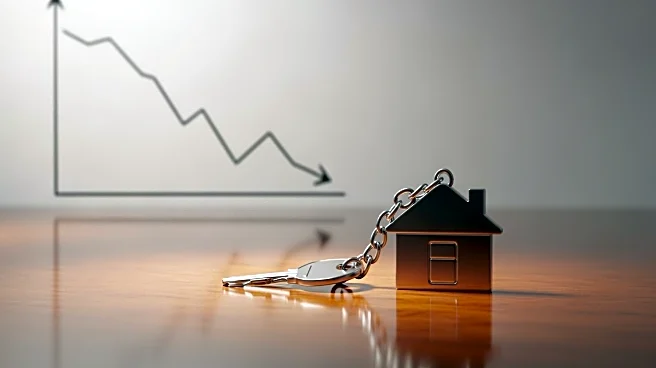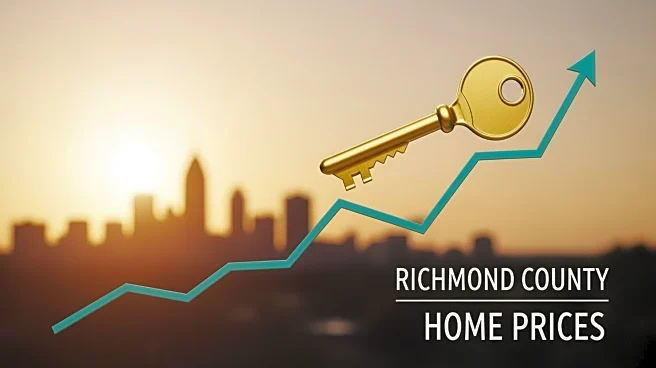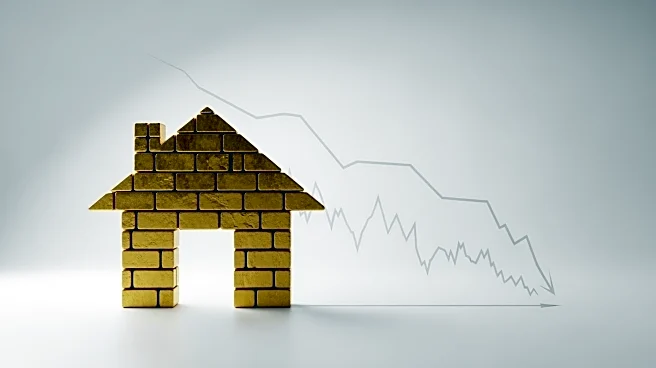What's Happening?
Down payments for homebuyers have stabilized, offering relief as the housing market cools, according to Realtor.com's latest quarterly report. From July to September 2025, the average down payment was
14.4%, or $30,400, showing minimal change from the previous year. The median down payment rose slightly by 0.1 percentage point from Q2, indicating a softer and steadier housing market compared to last year. Despite mortgage interest rates trending downward to 6.27%, they remain high for many potential buyers, especially given the elevated median list price of $425,000. Affluent buyers purchasing high-end homes are contributing to the elevated down payments.
Why It's Important?
The stabilization of down payments reflects a cooling housing market, which may provide opportunities for buyers who have been sidelined due to affordability challenges. This trend could influence the real estate industry, as more buyers may enter the market, potentially leading to increased sales and economic activity. However, the high mortgage rates and elevated home prices continue to pose challenges for many buyers, particularly those seeking affordable housing options. The shift towards high-end home purchases may also impact the types of properties being developed and marketed.
What's Next?
As the housing market continues to cool, stakeholders such as real estate agents, developers, and policymakers may need to adjust their strategies to accommodate changing buyer preferences and affordability concerns. The stabilization of down payments could lead to increased buyer confidence, potentially driving more transactions in the coming months. Additionally, the ongoing trend of high-end home purchases may influence the development of luxury properties and the marketing strategies employed by real estate professionals.
Beyond the Headlines
The stabilization of down payments may have broader implications for the housing market, including potential shifts in buyer demographics and preferences. As affordability challenges persist, there may be increased demand for innovative financing solutions and affordable housing initiatives. The trend towards high-end home purchases could also impact urban development and infrastructure, as affluent buyers seek properties in desirable locations with premium amenities.











